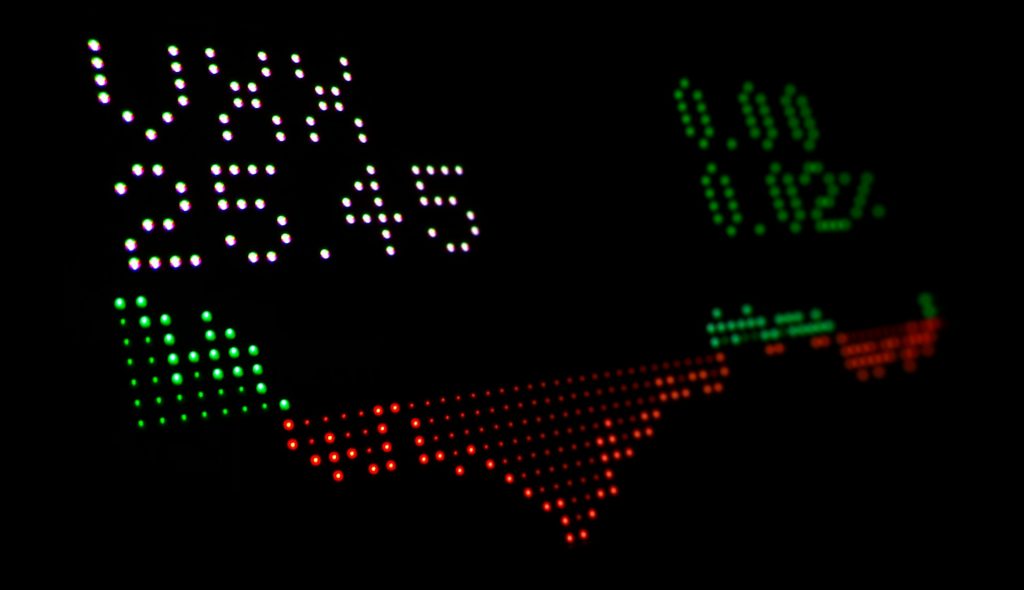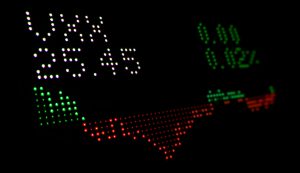Sprott Uranium ETF Dips as Investors Show Increased Caution in Broader Market

Spotlight on Miner Volatility
The Sprott Junior Uranium Miners ETF experienced a significant drop in trading, closing at $28.36, a loss of $1.85 (-6.12%) for the session. The fund, which traded within a day range of $27.60 to $29.85, has seen a wide 52-week range of $11.52 to $35.55.
The fund seeks to provide investment results that generally correspond to the performance of the Nasdaq Sprott Junior Uranium Miners Index. It typically invests at least 80% of its assets in the index’s securities, which consist of 30 to 40 constituents. The ETF currently holds total net assets of $403.800 million with 13.17 million shares outstanding. It carries a net expense ratio of 0.80% and offers a 2.86% yield, having paid a $0.81 dividend with an ex-dividend date of December 12, 2024.
Market Pulse Shifts to Caution
This volatility in niche sectors reflects a broader trend of “increased caution” among investors, according to a report from the Frankfurt Stock Exchange on October 21, 2025. After a period of pronounced euphoria, traders are now increasingly taking profits. “We recorded slightly more sales than purchases amid somewhat declining turnover,” reported Holger Heinrich of Baader Bank AG. Frank Mohr of Société Générale noted that while a buy overhang persists, at 62%, it is “significantly lower than in previous weeks.”
Demand for global index funds remains stable. Alongside classics like the UBS Core MSCI World, Heinrich noted that sustainable options, such as the Amundi MSCI World Climate Paris Aligned, and “multifactorial approaches,” like the iShares Edge MSCI World Multifactor, are gaining focus.
US Stocks Dominate Trading
Despite the cautious sentiment, US stocks continue to dominate trading activity. Heinrich observed a revitalization in US ETFs, driven primarily by quality and dividend strategies. The SPDR S&P 500 Quality Aristocrats saw strong buying. Conversely, “niche products” like the Franklin US Dividend Tilt and small-cap ETFs such as the UBS MSCI USA Small Cap Selection and the Amundi Russell 2000 were sold off.
Mohr also reported very active trading in US equities. The iShares Core S&P 500 and the currency-hedged Amundi Core S&P 500 Swap EUR Hedged were “diligently ordered.” Outflows, however, were reported for the SPDR S&P 500, which is currently the lowest-cost tracker of the main US index. Meanwhile, clients at ICF Bank focused heavily on leveraged products, with ETF trader Ivo Orlemann seeing high turnover in the WisdomTree S&P 500 3x Daily Leveraged and the WisdomTree NASDAQ 100 3x Daily Leveraged products.
Divergence in Europe and Emerging Markets
In Europe, Mohr described a high-volume market but with no clear trend. While ETFs tracking the MSCI Europe and Stoxx 600 were mostly bought, the L&G MSCI Europe Climate Pathway was predominantly on the sell lists. Heinrich registered keen interest in dividend and ESG-oriented strategies, such as the SPDR S&P Euro Dividend Aristocrats ESG. In contrast, country-specific indices, like the German MDAX, Xtrackers Spain, and Amundi MSCI Greece, were largely sold.
Emerging markets, however, showed a different picture. Mohr reported “above-average turnover and a clear buy overhang” for the category, with standard indices like the MSCI Emerging Markets seeing strong inflows.
Sector Rotations and Financial Headwinds
In sector-specific trading, Orlemann noted continued strong interest in defense and aerospace. Precious metals also remain a theme, with frequent orders for gold and silver ETCs as well as gold mining stocks. Tech stocks, as usual, were heavily traded, though Mohr reported good volume on both the buy and sell sides this time.
The financial sector, however, faced significant selling pressure. Mohr’s clients were divesting from funds like the iShares S&P 500 Financials Sector and the Amundi EURO STOXX Banks. This trend is likely linked to ongoing problems at US regional banks, which have also weighed on the prices of European financial stocks.




